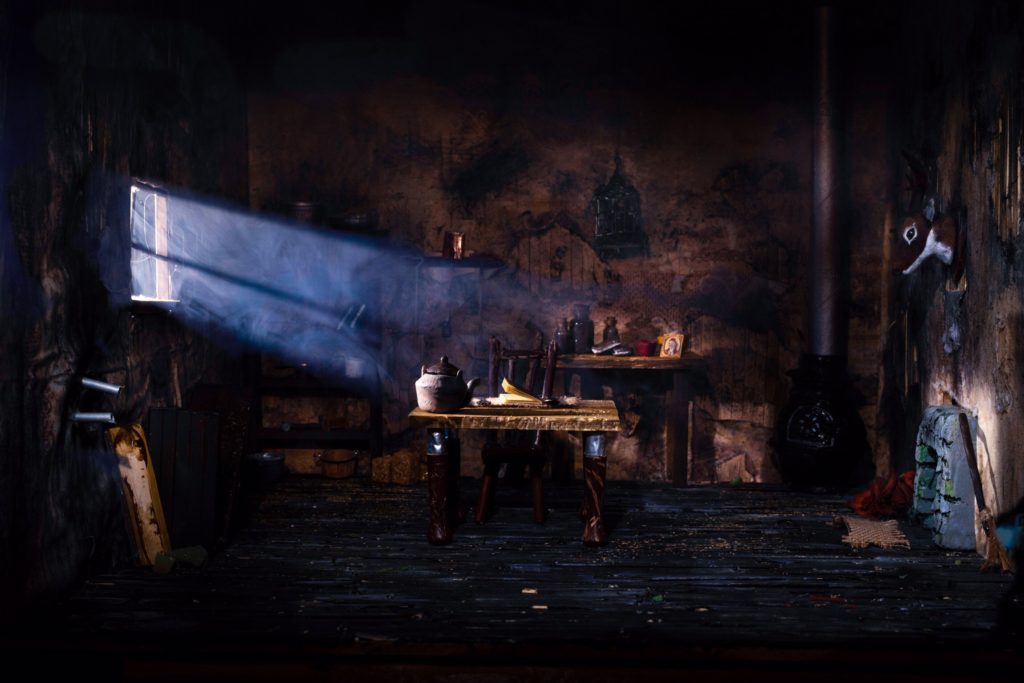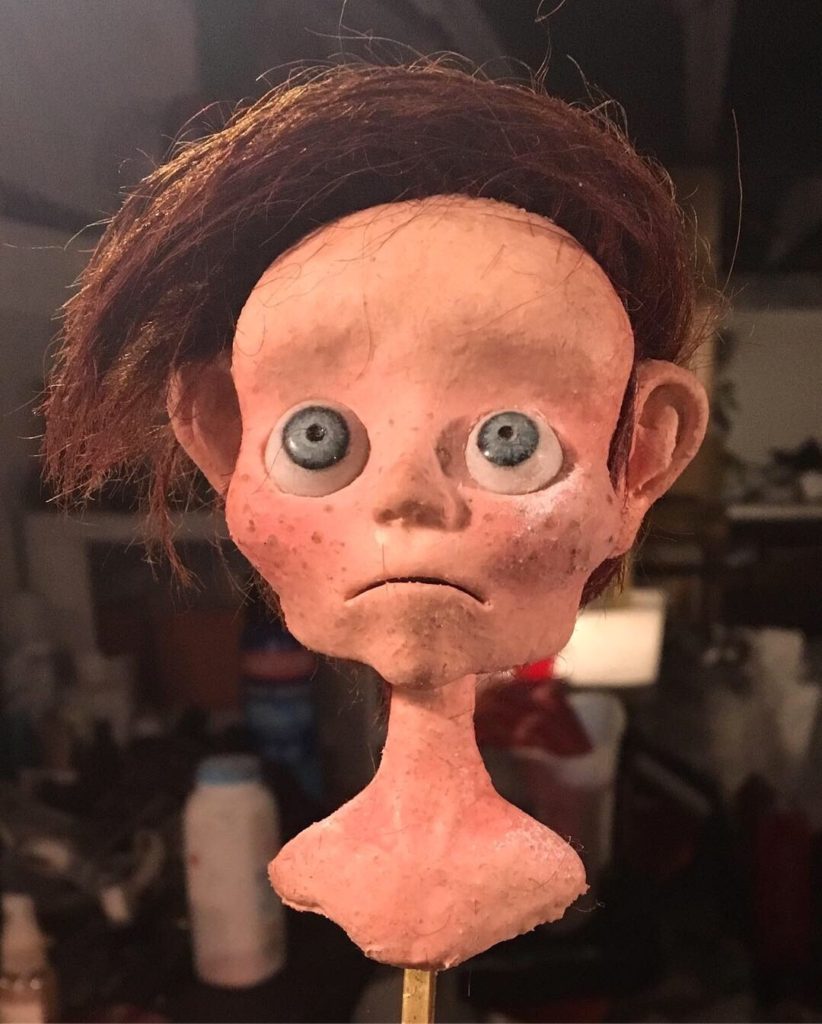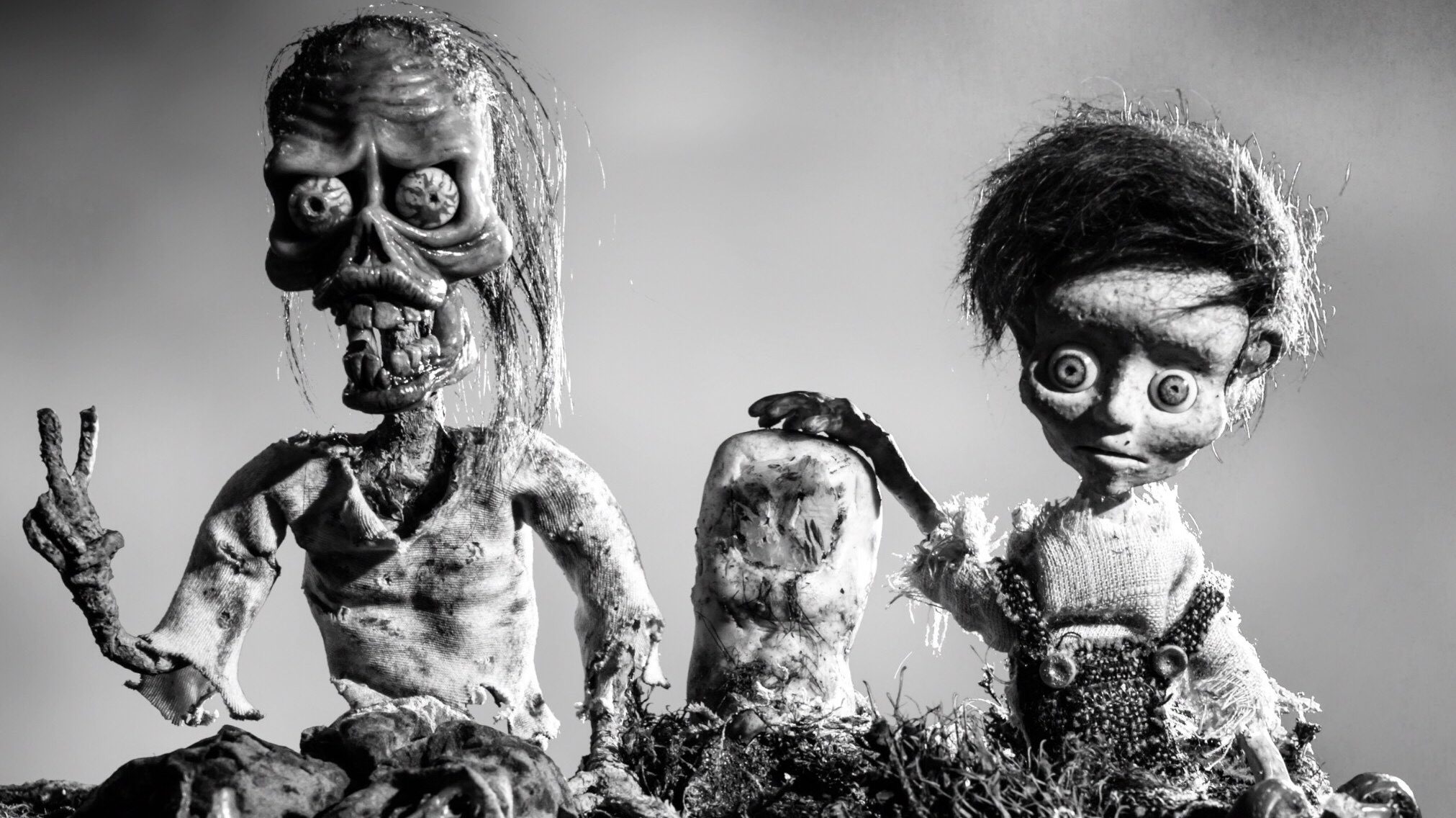This week we have the opportunity to learn from a filmmaker who’s combining modern-day scares with traditional stop motion animation. As an artist, Neal O’Bryan focused his talents primarily on still photography before returning to filmmaking to combine his passion of the two. We eagerly reached out to Neal once we learned about him using the Sigma Art lenses on his stop motion rendition of “Toe”, the classic American folklore tale made popular again with its inclusion in the Scary Stories to Tell in the Dark book series. After hearing how enthusiastic we were about his project, he was more than happy to give us his take on this 18 month-long production.

Note: Comments have been slightly modified for brevity and length
INSPIRATION
Of all the short stories in those books, why did you choose Toe?
The story of “The Big Toe” stuck out because it was simple and did not require many characters or sets. I thought it would be interesting to build a strong visual atmosphere to engage audiences. We also wanted to make it creepier than the original story.
Have you always been a fan of the Scary Stories to Tell in the Dark books?
I have vivid memories of reading Scary Stories to Tell in the Dark. The illustrations by Stephen Gammell scared the hell out of me. The picture of the woman with the cracked face and black eye sockets haunted me for years. I would actually try to avoid looking at that page but would inevitably get curious and take a peak. I have friends who remind me to this day that I should not have brought that book over to their house at such a young age.
Did you start in traditional animation or have you always geared toward stop motion?
‘Toe’ was my first attempt at stop motion and animation as a whole. It was by
coincidence that my co-director Chad Thurman and myself decided to make an animated film. We were both working full-time jobs and were itching to create something more significant than the regular comedy sketches we were used to. I was reading Scary Stories to Tell in the Dark and I thought to myself, “we should tell the story of ‘The Big Toe’ and we could do it with puppets in our own apartment!”
What and who are your inspirations both for this short film as well as in general?
My inspirations for ‘Toe’ are Tim Burton and Henry Selick for introducing me to stop motion. Studios such as Aardman and Laika have given me hope that there’s a future for stop motion in a world where CG is becoming more and more prevalent. Eraserhead by David Lynch probably had the most impact on me when coming up with ideas for the visual style and sound design. Lastly, this film would not have been made had I not stumbled on Scary Stories to Tell in the Dark as a kid.

PRODUCTION
Out of all the different styles of animation for this story, why stop motion?
Stop Motion has always been of great interest to me. Growing up, I was in awe at works such as The Nightmare Before Christmas and Rudolph the Red Nosed Reindeer. I can remember my older brother showing me Clash of the Titans and The 7th Voyage of Sinbad which were loaded with fantastic Ray Harryhausen stop motion. I’m very nostalgic when it comes to films, most of the movies I gravitate towards are from the 80’s or older. I love the visual aesthetic of Universal monster movies, the storytelling of The Twilight Zone and the world building of Jim Henson. I find older films that make use of practical effects to be much more exciting and magical. Stop motion is a perfect medium for my tastes because everything is tactile and hand made.
What aspect of this film are you most proud of?
I am most proud of the fact that we actually finished making ‘Toe.’ There were many times where we felt like we were moving at a snail’s pace and the project would never be completed. I feel like we learned so much about animation and miniature set building and by the end of the movie, our skills greatly improved. We were also very fortunate to have other artists reach out to us on social media to help with the production. Flora Cheng is a composer based in L.A. and she created the chilling score, Cassie Carey added some voice work and a local Chicago illustrator named Jonathan La Mantia made the incredible poster art. It was a pleasure getting the chance to collaborate with these artists, it made the film so much better

What was the most difficult shot/scene to achieve?
Early on in production, we had a profile shot of the boy walking through the woods. To achieve this shot we had to screw his foot onto the surface which was actually a pegboard. Every time his foot would lift off the ground we had to secure the other foot to keep the puppet from falling over. When animating you have to be very careful not to accidentally bump anything on the set or move the camera or it can ruin the shot. We had to be extra careful moving our hands around the trees and film equipment. After shooting for five hours, one of us accidentally hit the camera. We animated for 11 hours to get seven seconds of usable footage for that day.
How did the Sigma lenses help to execute your vision?
One of the perks of stop motion is you get to take digital still images which are much higher in resolution than standard video. That means each frame of our film can take full advantage of the dynamic range and sharpness of the Sigma lenses. We knew we wanted ‘Toe’ to have a rich, contrasty, and textured look and the Art lenses allowed us to capture that. The sharpness of the lenses showed every scratch in the wood and speck of dirt on the characters face. The f1.4 aperture was great for when we needed a shallow depth of field to give our film that gorgeous “cinematic” look.
Which lenses were you using?
We used a combination of primes and zooms for ‘Toe.’ I found the 24mm f1.4, 50mm f1.4 and 85mm f1.4 Art lenses covered most of my needs for shooting. Occasionally I used a 24-70 F2.8.
When working on a stop motion project, what is typically the biggest hurdle to overcome?
The biggest hurdle for stop motion is learning patience. You have to spend long hours hunched over a set, making meticulous movements frame by frame. Something as simple as blinking can involve a series of difficult steps. Making animation look fluid is no easy task either. We learned the hard way by starting off our animating career with some of the toughest character movements; walk cycles. It was very frustrating seeing our initial crude animations but eventually we got better and have some shots I am really proud of.

Can you speak more on the combination of horror and animation?
I feel stop motion is naturally unnerving. It can be beautiful but often times seeing something inanimate come to life can be unsettling. I am a huge fan of horror but I feel like I don’t see many animated films tackle the genre in a serious manner.
FUTURE ENDEAVORS
What are your plans for the short film now that it’s completed? Where will people be able to watch it in the future?
We have submitted ‘Toe’ to numerous film festivals in the U.S. and abroad. It will be screening in Chicago, L.A., London, Mexico City, Toronto and other cities. It has been an incredible experience attending these festivals. We have met so many amazing filmmakers and it’s really wild sitting with a live audience and watching our film on the big screen. We have been in contact with a potential distributor that would allow ‘Toe’ to stream online, however, we will have to wait until the end of the year for the festivals to close before releasing it to the public.
What project is up next for you?
I feel crazy for saying this after spending 18 months on ‘Toe,’ but it looks like we are going to make another stop motion animated film. As an art form, stop motion is very unique with its own set of challenges but it’s incredibly rewarding. I want to build off the momentum of ‘Toe’ and make something bigger and better. I am currently developing an original screenplay influenced by the works of H.P. Lovecraft and classic literature like Moby Dick. I feel like stop motion is often geared towards family friendly audiences so I want to tell a serious tale for adults with elements of horror and suspense. The idea is still shaping itself but could lead to a feature film

If you want to learn more about Neal as well as Toe, then please check out his website at www.nealobryan.com or his instagram @nealobryanphoto
See the trailer and get updates on showings from the Toe Film Twitter Feed!

